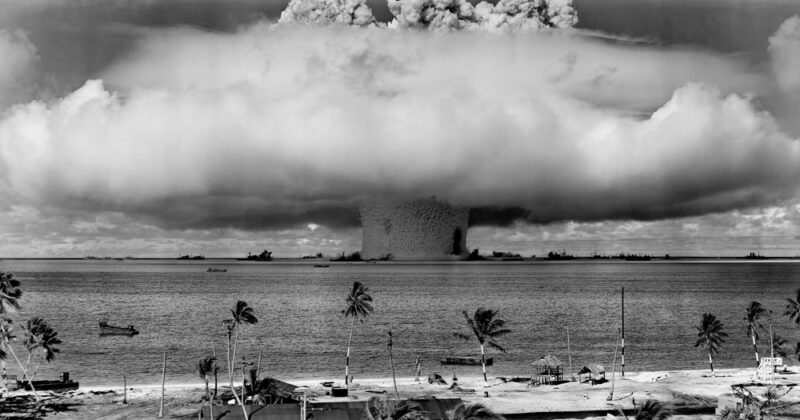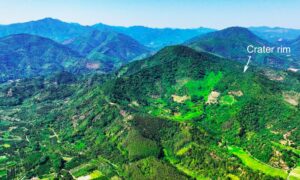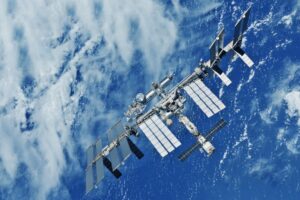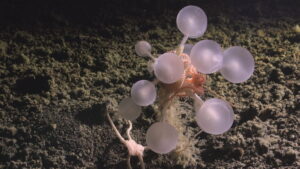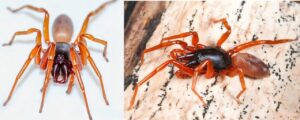In March 2022, a Saharan dust storm turned skies a hazy orange across Europe. The far-ranging dust cloud contained radioactive particles from Cold War nuclear tests, according to a new study.
The major dust storm prompted a citizen science campaign that asked the public to collect dust samples. In total, volunteers collected 110 samples across Belgium, Spain, France, Austria, Luxembourg, and Germany. Researchers at the Paris-Saclay University in France then analyzed 53 samples from those six countries. All showed the presence of radioactive isotopes, especially plutonium and cesium.
In the 1960s, France detonated 17 atomic bombs in the Algerian Sahara. They claimed that by dropping them in the desert, the bombs would have no impact on human life. That they would only be dropped in uninhabited regions. In reality, the radiation affected between 27,000 and 60,000 people.
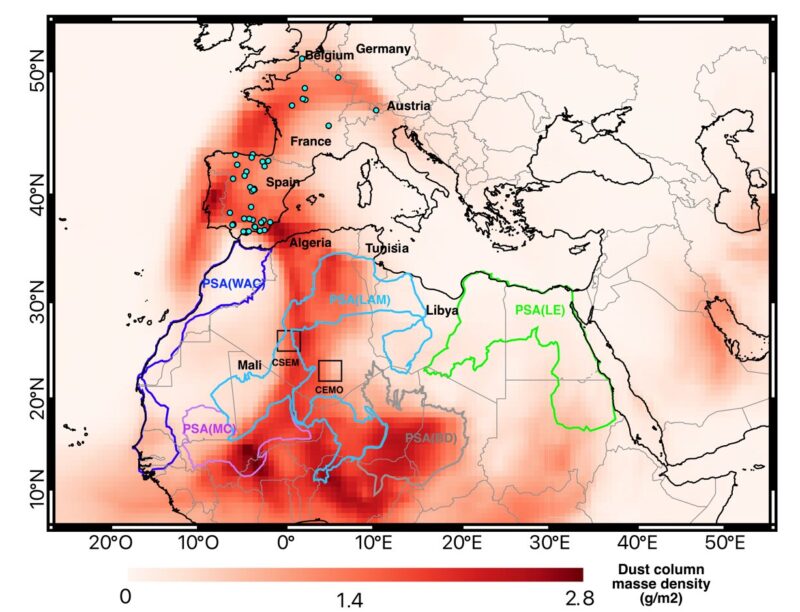
The March 2022 dust cloud spreading across Europe. Cyan dots show the locations where dust samples were taken. Image: Xu-Yang et al., 2025
Global reach
Initially, the team suspected that the radioactive dust came from those Algerian tests, but the isotopic signatures did not match up. Instead, they matched the signatures from American and Soviet nuclear tests in the 1950s and 1960s, even though these did not take place in the Sahara.
“Plutonium isotopic signatures, a unique nuclear bomb fingerprint, remained in the range of the global fallout signatures largely dominated by U.S. and former USSR nuclear tests,” commented the researchers. “[They were] significantly different from French fallout signatures.”
Between them, the two superpowers undertook hundreds of nuclear tests across the planet. Many studies have proven how far the radioactive particles spread.
“Much of the USSR and U.S. nuclear weapon tests [took place] at the same latitude as South Algeria, and the debris of these tests can reach 8,000 meters high and be dispersed by wind very quickly at a global level,” lead author Yangjunjie Xu-Yang told IFLScience.
This research highlights the long-lasting presence of decades-old nuclear testing.
The actual level of radioactivity within the samples was relatively low and is not considered harmful.
